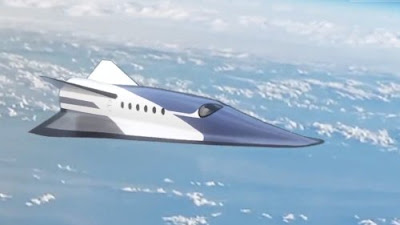DAILY INNOVATION BRIEF by Edward Kane, Journalist
DAILY INNOVATION BRIEF
By Journalists Edward Kane & Maryanne Kane
GOVE COULD BE YOUR NEXT RIDE & FLIGHT
- Chinese automaker GAC just unveiled a very impressive, flying and driving car prototype named Gove that is electric and autonomous
- GAC, a highly innovative company, simultaneously unveiled the world's 1st ammonia-powered car engine, which is free of carbon emissions & needs further refinement & development
- Here are key details on Gove, which could be your next flying & driving car:
- One-seater that's electric powered and drives autonomously
- Built on a modular system that allows the flight & automotive components to be separated so you can drive it before & after the flight
- Flying passenger drone with six sets of rotor blades
- Range: 124 miles
- Takeoff: Vertical
- Target Footprint: Starting with air travel between cities located on the water in southern China
- No price or timeline yet
- Two other Chinese companies are developing eVTOLs - XPENG & Aerofugia
- GAC says it envisions a future in which passengers can easily access multidimensional modes of mobility.
ESTER THE ROBOT TENNIS PLAYER PRO
Source: Georgia Tech
- Roboticists at Georgia Tech have developed a robot tennis player that could serve as a training partner for professional tennis players in the future
- It's called Ester (experimental sports tennis wheelchair robot) & is named after renowned wheelchair tennis player Esther Vergeer
- It's autonomous & specifically designed for tennis training & as an alternative to tennis ball machines
- Esther simulates a human opponent under match conditions
- Being called a breakthrough in human scale robots
- Can spot an incoming ball & return it using cameras around the court & computer vision algorithms to read the ball's trajectory & respond
- Customized wheelchair to maximize the robot's movements on the court
- Team is working to increase Esther's abilities to win games
- Multiple Uses: manufacturing, construction & any task requiring fast, precise movements.
SATURN MOON COULD SUSTAIN LIFE
- A major scientific discovery deep in space gives hope to the possibility that life exists elsewhere in the universe
- For the first time, phosphates have been found on one of Saturn's Moons Enceladus in an ocean - also the first time phosphates have been found in an ocean not on the Earth
- The amount of phosphates, which is critical for any biological activity, may be 100-times what oceans on Earth contain
- Data, from which this new breakthrough discovery was made, is from NASA'S Cassini mission which flew around Saturn and Enceladus
- Some of the data was extracted from huge plumes of water spewing from the ocean under Enceladus' surface and jetting into space
- This new discovery is another fascinating milestone in the search for life in space.
For more news stories like this, SEARCH FOR LIFE IN SPACE
.jpg)
.jpg)

.jpg)






Comments
Post a Comment